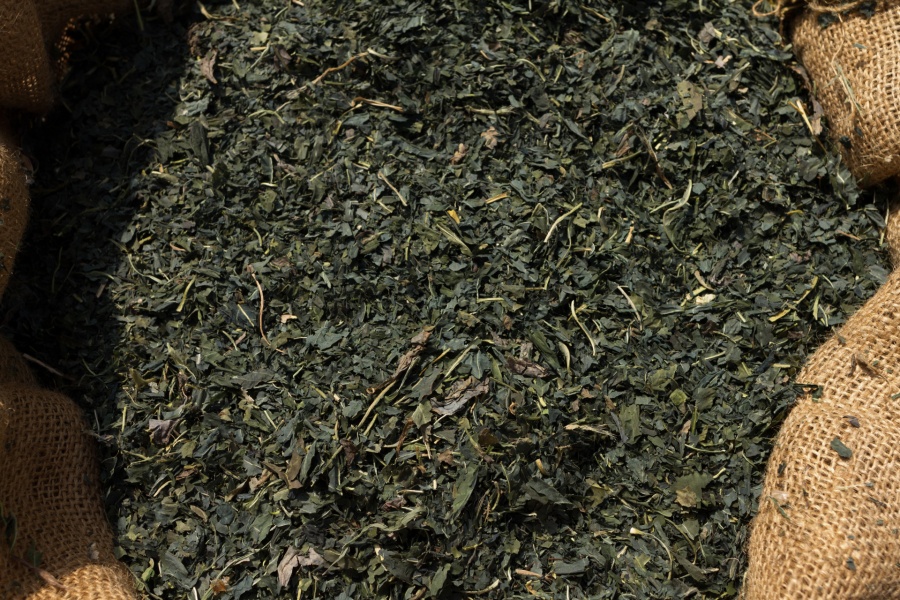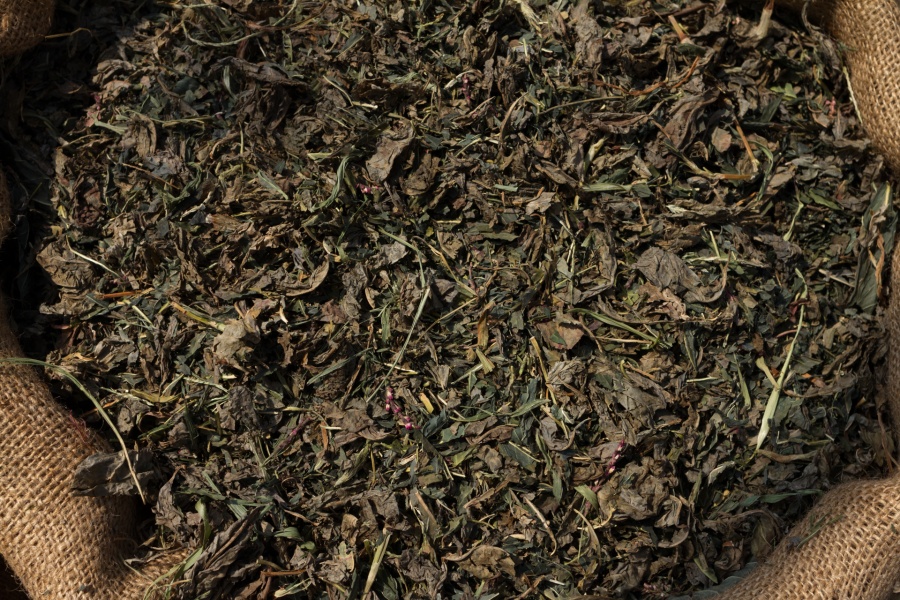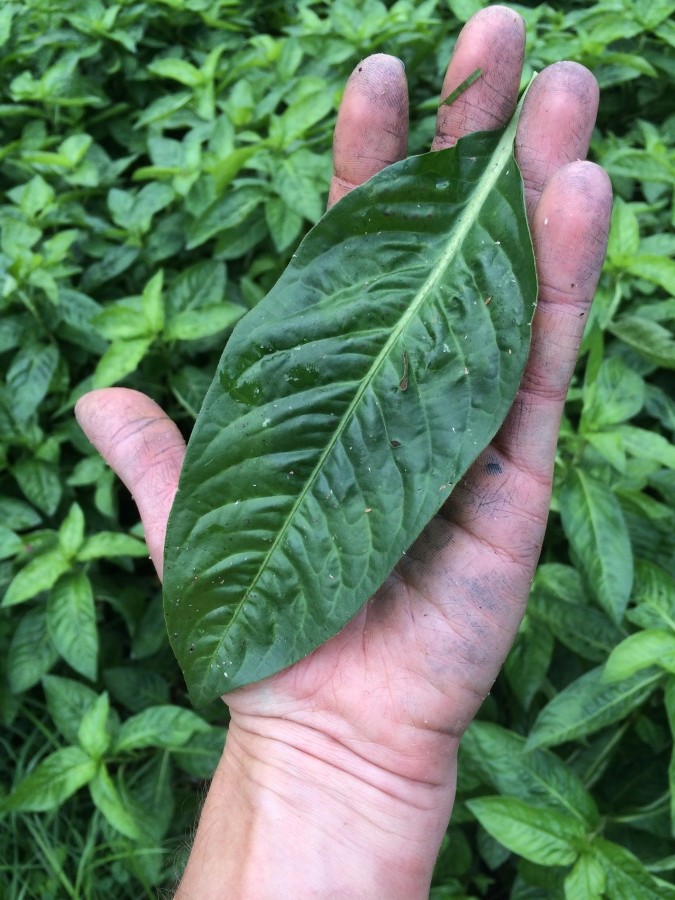
Whether you’re growing just a few plants or a few thousand row-feet, you want your plants to be as healthy as possible so that they produce the maximum yield of indigo. Polygonum tinctorium / Persicaria tinctoria plants thrive in well-drained, rich, pH-neutral soil in full sun with a good watering once a week in dry spells. If any pieces of this puzzle are missing you could end up with stressed plants, and stressed plants produce significantly less indigo.
Signs of Stress
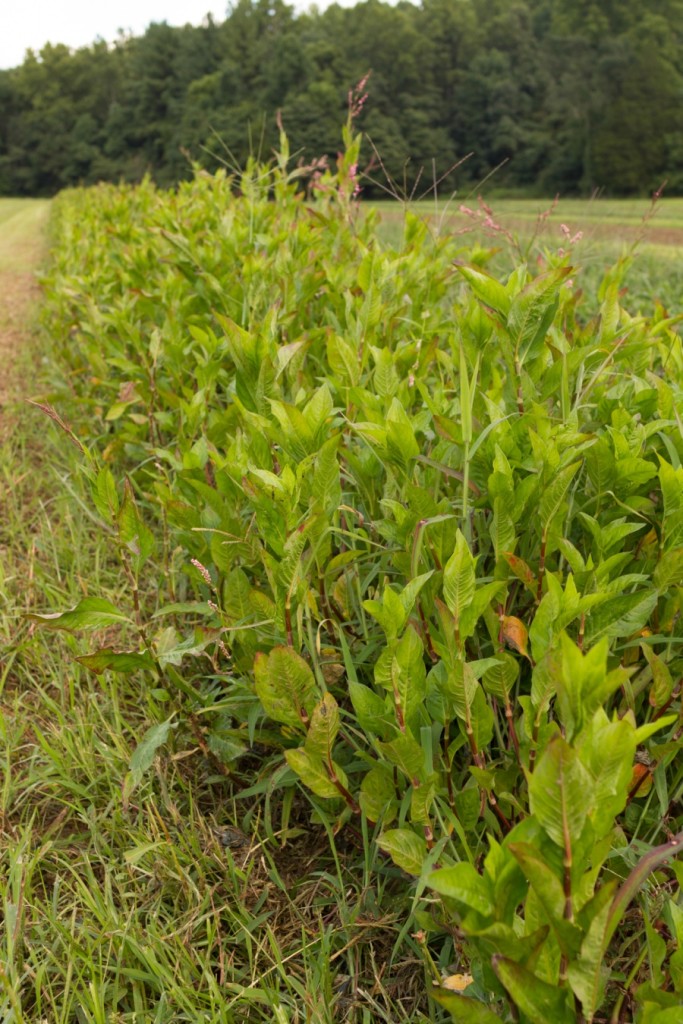
Healthy plants should have large, relaxed, dark green leaves. If the leaves are stunted, pointing upwards, yellowish, or turing red at the edges, your plants are stressed. The most likely culprits are deficient soil, lack of water, or too much water.
Building the Soil, Feeding the Plants
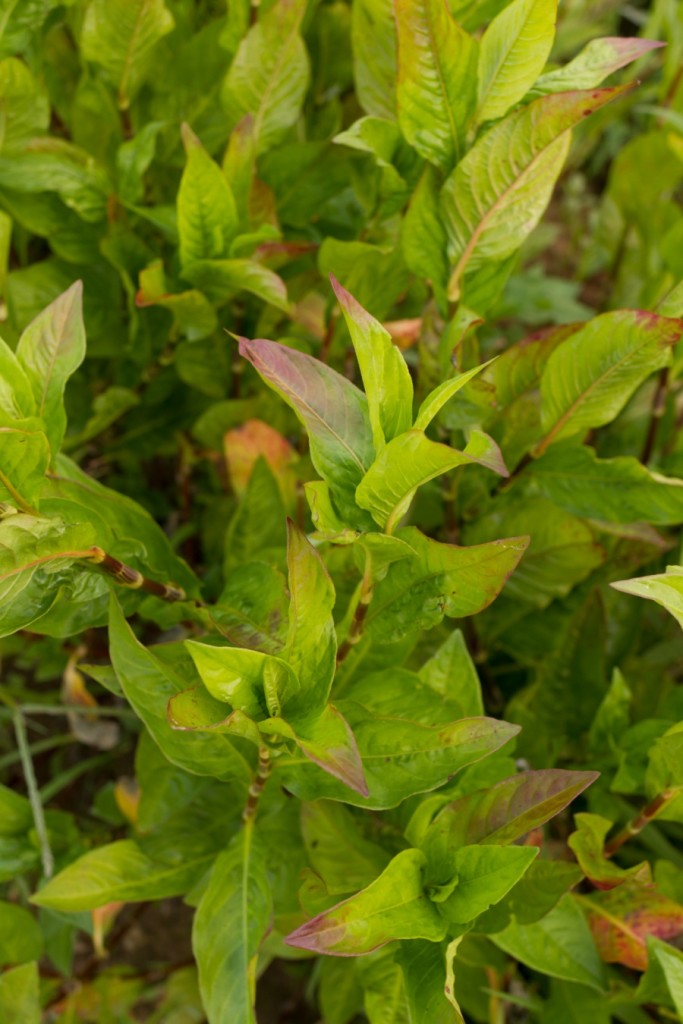
Before the start of each growing season I add lots of compost to my fields. Composted cow manure is ideal, but I don’t have a good source here locally so I go with leaf compost and amend it with blood meal. I spread these evenly across the field and till them in. I also dress the entire field in a balanced organic fertilizer. One week after transplanting I top dress the plants with a balanced organic fertilizer and being foliar feeding the plants with fish & kelp emulsion. I foliar feed once every two weeks during the growing season, and top dress again after the first harvest is completed.
Water
For years I dry farmed, but two years of intense drought here in Indiana convinced me that it was time to put in watering lines, so I’ve built a simple drip-tape system for each field. The drip lines are run at the time of transplanting and are eventually buried as I cultivate between the rows and mound soil up around the base of the plants. When it rains I don’t need to turn the system on, but when it’s dry I can set it to run in the middle of the night once a week. Because the lines are buried the water goes right to the roots, and there’s no waste from evaporation. It’s possible to have too much water, but that’s mainly a soil drainage issue. If your soil’s well drained your indigo will thrive even if you have record amounts of rain like we did earlier this season.
The Difference
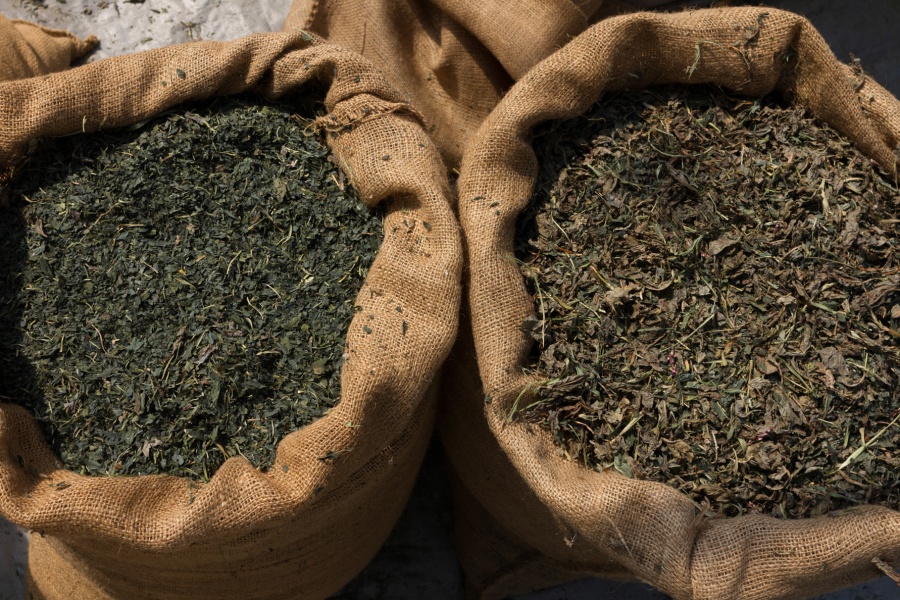
You can still harvest and dry unhealthy plants, but the quality of your indigo is greatly diminished. Stressed plants produce not just fewer leaves, but less indigo overall. I think that this image makes it really clear as to why you want your plants to be healthy before harvesting – otherwise you did all that work for very little dye! There are two more detailed images below of the dried leaves so you can see the difference up close.
